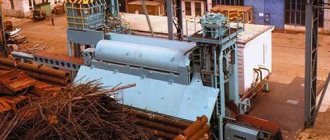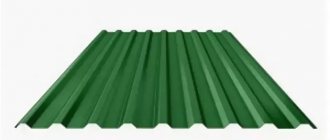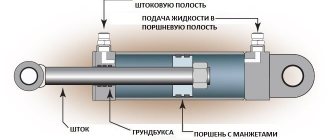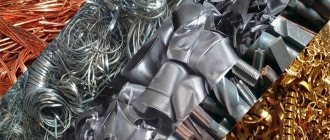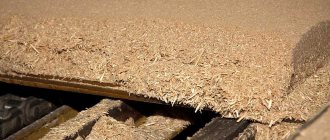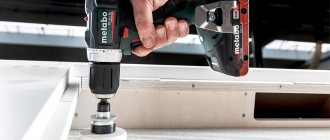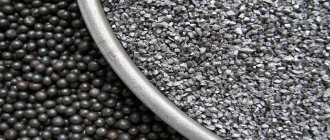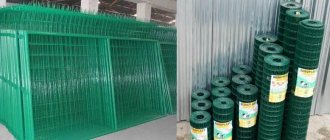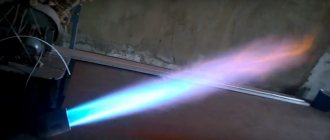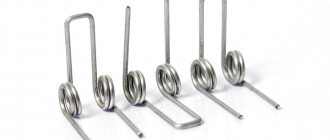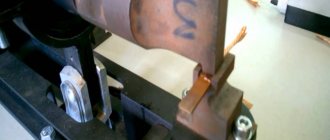Almost all types of polymers that are found on the market of industrial and building materials in the form of sheets and products can also be produced in the form liquid two-component mixtures, enamels and solutions. These materials are semi-finished products for the further production of hard coatings, parts and elements of complex structures. Semi-finished products have a wide range of uses, from large-scale industrial production to individual household needs.
Types and purposes of liquid plastics
The term “liquid plastics” is a conventional name for a whole group of polymer materials produced in the form of an initial fluid mass, which, after pouring into molds or coating surfaces, acquires the qualities of a solid synthetic material.
Chemical reactions that trigger the hardening process of the material occur under the influence of air. Depending on the type of mixture, the process can take place at normal ambient temperature or at elevated temperatures. The main types of liquid polymers are as follows:
- Liquid plastic paints are a universal coating for all types of surfaces, reliably protecting products, parts and containers from the effects of chemically aggressive liquids, mechanical shocks, corrosion and imparting decorative and aesthetic qualities to structures. Paints are mixtures of polyurethane, acrylic or alkyds with coloring and plasticizing additives. Organic compounds are usually used as solvents.
- Polymer compositions for sealing joints, filling cracks and holes significantly exceed in their technical characteristics the commonly used silicone sealants. The starting material has the consistency of a paste, and after hardening it acquires the strength and elasticity of a solid polymer.
- Cold polymerization injection molded plastics are fluid two-component compositions, when mixed, a hardening process occurs in the open air. The composition polymerizes at normal ambient temperature for a short period of time. The material is ideal for casting various complex shapes, as it repeats even the smallest details of the matrix.
- Liquid plastic for a car is applied to the body to preserve the paintwork, protect against the formation of microcracks, and protect the metal from rust and mechanical damage. The polymer coating prevents fading of the car’s “native” color and enhances the effect of shine and newness of the body.
Classification of plastics for industrial injection molding
To divide polymers into categories, the following characteristics are used:
- Purpose. For construction, the food industry and the service sector, plastics with excellent strength and safety requirements are used.
- Physicochemical characteristics. This refers to the composition, density, color, transparency and rheological characteristics of the source material, such as fluidity, melting and solidification points. In accordance with these parameters, plastic for casting can be amorphous crystallizing (PS, PE, PMMA), crystalline thermoplastic with a short melting period at high temperatures (PA, PF) and substances prone to destruction with low thermal stability.
- Degree of processing. Primary and recycled materials are used in production, which largely determines the price of the finished product.
A comprehensive analysis of the combination of these factors allows us to select plastic for serial casting with parameters that meet the requirements of a specific technology, the estimated cost of production and other customer wishes.
Application of liquid polymers
Due to the highest technical characteristics, convenience and manufacturability of work, injection molded plastic is often used instead of a wide variety of structural materials of artificial and natural origin. Some areas of application of liquid polymers are worth considering in detail.
Polyurethane floor covering
Traditionally, floors in industrial buildings have a concrete or mosaic covering cut into 6x6 m cards. Depending on the type of technological processes, floors in workshops can also be tiled, have enhanced waterproofing and other technical features.
Recently, polyurethane self-leveling floors have become increasingly popular. Polymer floor covering has the following distinctive properties:
- high wear resistance and strength, allowing the coating to be used as a surface for the passage of forklifts, cars and even trucks;
- high maintainability, providing the ability to quickly and efficiently restore damaged areas. For this, cold-curing liquid plastics are used;
- excellent waterproofing characteristics, which make it possible to use this flooring design in rooms with wet technological processes;
- resistance to ultraviolet radiation;
- possibility of operation in the presence of chemically aggressive environments;
- resistance to spills of technical liquids, such as solvents, fuels and lubricants and others;
- the ability to lay the polymer composition on almost any surface - concrete, cement, wood, stone base, metal slabs;
- polyurethane-coated floors are easy to use and can be easily washed and cleaned manually and mechanically;
- floors can be used in both heated and unheated rooms, as well as in rooms with high humidity and sudden temperature changes;
- polyurethane coating for concrete floors has high aesthetic qualities and gives the room a neat and modern look.
Molded polymer coatings can be installed both indoors and in open spaces (open warehouses for raw materials and finished products, parking lots, tennis courts, areas for roller skating, go-karting and other technical and sports facilities). Liquid plastic can be used to apply to asphalt surfaces as road markings.
In addition to polyurethane coatings for finishing street building structures, steps, stairs, fences, and various small architectural forms, polymer-alkyd-based paints can also be used.
The application of such compositions does not require careful surface preparation and reliably protects structures from corrosion, the effects of mechanical loads, impacts and impacts. The coating is easy to clean from dust and dirt and has a beautiful and attractive appearance.
Liquid plastics for windows
One of the relatively new areas of application of liquid plastics is the sealing of mounting assemblies of plastic windows and doors. The use of polyvinyl chloride adhesives for these purposes is gradually replacing the traditional silicone sealants and mastics.
Unlike silicone, liquid polyvinyl chloride, filling the cracks, enters into a chemical bond with plastic window structures, starting the process of chemical welding of parts. At the end of the polymerization process, a strong, homogeneous plastic structure is formed that does not have clearly defined bond boundaries.
Flowable polymer mixtures for windows can have different colors and shades. Transparent materials are available. The cured material does not fade or shrink over time, which makes the seal better and more durable than silicone filling.
Advantages of the method
Polyurethane injection molding has a number of advantages:
- in the process of such manufacturing, a small percentage of defects is obtained;
- serial production possible;
- cheap material;
- it is possible to reuse the material, which reduces costs;
- no need for a foundry worker.
However, there are also disadvantages to plastic injection molding. One of them is the need to use only proven and high-quality equipment so that the method is economically feasible and cost-effective.
This disadvantage can be easily overcome if you find the right supplier. If you are looking for where to buy equipment for plastic injection molding, then contact us! is a supplier of reliable equipment for any production.
Injection molded two-component plastics
One of the most popular applications for liquid polymer mixtures is the manufacture of various parts by pouring the material into appropriate molds. Liquid plastic for casting is a two-component mixture consisting of a base and a hardener, which, interacting with each other, form a solid polymer mass. The material is widely used for the manufacture of such products:
- building blocks;
- façade structures;
- relief decorative elements;
- sculptures, masks and other three-dimensional artistic products;
- rollers, rollers, wheels;
- plates for lining metal structures;
- chemically resistant lining elements for containers and containers;
- medical prostheses;
- anti-vibration bushings, gaskets and attachments.
After being poured into molds, the two-component liquid plastic polymerizes and hardens, precisely repeating the smallest details of the matrix. After removal from the mold, the surface of the product can be further refined mechanically or manually.
Ease of processing makes this material popular among creative professionals.
Types and brands of injection molding polymers differ in the speed of hardening, degree of density, ductility, strength, hardness, as well as colors and level of transparency. Products obtained by pouring liquid plastic are superior in performance to products made from rubber, rubber, gypsum and concrete mixtures.
Disadvantages of conventional sealants
Acrylic quickly turns yellow and is soon washed off; its adhesive properties are weak, as they peel off after 3 or 4 months, and can darken or even become moldy.
Often used siliconized acrylics absorb tobacco smoke and interact with fragrance chemicals, resulting in a bright yellow tint within a year.
MS polymers have a milky tint, but often when purchasing such sealant you can purchase a fake.
More on the topic: Flashings for plastic windows
Types of adhesives
The following compounds are most often used to seal balcony and window structures.
Cosmofen 345
Cosmofen 345 is an excellent product for sealing and sealing seams between window parts. The glue does not spread, is white in color, is not afraid of moisture and does not turn yellow under the influence of ultraviolet radiation. Thanks to the specific shape - a bottle with a tip, the composition is very easy to apply
Considering that a portion freezes in 60 seconds, this is an important advantage
CosmofenPlusHV
CosmofenPlusHV is a version of “liquid nails”. Its main task is to fasten parts: strips, drains, window sills and other things. However, Plus also has the properties of sealant. The composition has increased viscosity
This is an important advantage, since such a seam has some elasticity and compensates for the difference in the thermal conductivity of different materials. The glue is produced in sealed packages of 200 g.
The photo shows the PlusHV composition, packaged in 200 g. CosmofenСа 12 is a universal option, suitable for gluing not only window parts, but also other products made of PVC, polypropylene, wood, metal, glass. The strength of the connection is in no way inferior to fastening with nails and screws.
The disadvantage of CA 12 is the small volume of packaging. For household needs, a bottle of 20 and 50 g is enough, but for gluing such large parts as platband or window sill, you have to use several packages of CA 12.
Precautionary measures
Since Cosmofen glue contains cyanoacrylate, which is not entirely safe for humans when exposed directly to the body, you should follow some rules so as not to harm yourself.
1. All work must be carried out with gloves so that the glue does not get on the skin, otherwise this can lead to instant gluing of hands to things or to each other.
2. To avoid inhaling glue vapors, you must wear protective equipment: a face mask or a respirator.
3. The room must be well ventilated.
4. For people with allergies, it is better to leave this work to someone else to avoid undesirable consequences of exposure to Cosmofen.
5. Sealants are quite flammable. Using open fire near glue or smoking indoors is strictly prohibited.
Expert advice
Working with polymer sealant is not difficult, but beginners encounter minor flaws that affect the quality of the result. Here are some professional tips to avoid this:
- Speed and attentiveness. The application site must be selected in advance, and then the required amount of mass must be squeezed out of the tube.
- Avoid foamed surfaces. After the foam subsides, the frozen plastic becomes deformed.
- Don't rush into exploitation. Hardening occurs after 15-20 minutes, but the diffuse welding is not yet strong. You can use the fastened structure no sooner than after 24 hours.
Using a plastic composition, you can make window slopes or repair household items.
Liquid plastic is almost universal and provides instant fixation. The product is moisture-resistant, durable and does not lose color under the influence of the sun.
Famous brands
Many companies specializing in construction equipment have begun to produce PVC liquid plastic for windows. High demand generates competition among producers. Domestic and imported brands compete on the Russian market; they have advantages and disadvantages.
The main difference is the price. Foreign goods are more expensive, but are of good quality. The price range of Russian-made polymers is wider, the quality varies.
Cosmofen
The German company produces the Cosmofen line. The composition contains flowing polyvinyl chloride, which firmly connects window frames. This is a sales leader, occupying a position for over a hundred years, characterized by:
- Decent strength indicators.
- It is possible to work in a wide temperature range up to +80 °C without damaging the crystal lattice.
- The seam has no odor, does not form cracks, and does not turn yellow.
- Long service life.
- Easy application technology, low consumption.
- Convenient metal tubes.
Cosmofen 345 is available in 300 ml containers. Designed for sealing windows, plugging holes up to 7 mm wide, gluing rigid PVC, flashings, profiles in light-transmitting products. It is characterized by its resistance to weather conditions and low shrinkage. The cost of packaging is 600-700 rubles.
Cosmofen Plus is suitable for small jobs, consists of cyanoacrylate, and is universal. The tube contains 20 ml or 200 g and costs 280-300 rubles.
| Name | Characteristic | It is important to know |
| Cosmofen CA 12 |
|
|
| Cosmo CA-500.200 |
| does not contain organic solvents. |
| Cosmofen liquid plastic | applicable for the restoration of cracked and broken elements of plastic windows of different thicknesses. (repair of plastic window sill) |
|
| Cosmofen 345 |
|
|
| Cosmofen PMMA |
| contains an organic solvent. |
| Cosmofen DUO |
|
|
| Cosmofen Plus HV |
| high compressive and tensile strength. |
Advantages
Liquid plastic has recently appeared on the market and has virtually no disadvantages. This sealant uses the principle of diffuse welding, that is, it has the property of ideally welding surfaces in places where parts come into contact. Consequently, after applying the glue, a single part is formed in the problem area, without any color or other modifications.
Butt window treatment using liquid plastic has the following positive properties:
- joining seams are treated with the same material as is used for slopes and windows;
- high density of parts bonding;
- after complete hardening, a monolithic part is formed at the gluing (welding) site, where there will be absolutely no gaps between the slope part and the window;
- the desired effect is achieved through the use of diffuse welding - a technology that provides for the mutual penetration of parts;
- mold or mildew will never form in the place where the treatment was carried out, and the seam itself is characterized by sufficient strength;
- the sealant is absolutely safe for health and does not harm the environment;
- The manufacturer's stated warranty regarding the sealant indicates that the formed seam will not be subject to change for at least 15 years.
Price
For a 200 g tube only 275 rubles. You can buy it at any hardware store.
Finishing slopes of plastic windows using liquid plastic
The installation process does not end with the installation of new plastic blocks and additional finishing of window openings is required. Therefore, after installing glazed window frames, there is always a need to finish the slopes. This is due to a number of reasons:
- Slopes increase the thermal insulation of the room, maintaining its microclimate;
- These elements serve as additional protection against noise;
- The design of the window slopes gives the windows completeness.
In order for plastic slopes to look in one ensemble with the windows and perform all the tasks assigned to them, their finishing should be approached with special care and the connection with the window structure should be carried out as carefully as possible.
Finishing with liquid plastic is the final stage of the installation of slopes. With its help, you can successfully solve the problem of not only sealing slopes, but also decorating them. To do this, the joint area is treated with this polymer not only between the window frame profile and the slope panels, but also between the slope panel located at the top and the side facing panel. The seams perpendicular to the window between the side slopes and the window sill are sealed from below.
With proper, careful finishing, a single harmonious design of the window opening is obtained.
Rice. 8. Places for treating slopes with liquid plastic and their appearance after finishing
Criterias of choice
When selecting PVC glue, you need to take into account the purpose of the purchase. In rooms with high humidity, compositions that are unstable to moisture should not be used. For outdoor installation, you should choose materials that can withstand changing weather conditions. If a product is needed for creativity, you should pay attention to safe and least toxic options without a strong odor.
Selection criteria:
- after drying, the seam should not smell;
- maximum polymerization time 10-15 minutes;
- the mixture is not too dense, but does not spread;
- possibility of processing with grinding tools;
- availability of certification;
- impact resistance.
Characteristic differences
Quite often in the domestic sphere, RP is used for high-quality sealing of seams in polyvinyl chloride windows. Flawless bonding of the slopes and the block itself is ensured due to the fact that such products are made of a solid substance. The plastic has the same structure and density. After the glue has completely hardened, the impression of a monolithic structure is created. The manufacturers themselves note that the sealant is ideal not only for plastic windows, but also for old wooden frames.
After many years of use, the wood may simply dry out, causing deep cracks to form. Larger ones can be sealed using non-expanding foam. The nose of a construction gun simply cannot fit into small cracks, and careless use of the material can provoke the development of deformations. That is why experts recommend using a universal hard drive.
Adhesive sealant can be safely used to seal gaps between the frame and glass. More recently, such areas were sealed everywhere with standard mastic, but this procedure had to be repeated several times, as the material simply dried out. In the case of liquid plastic, this problem is completely eliminated. Since reliable protection against gaps is observed for 15-20 years. The product will not affect the overall aesthetics of the window, and the product will not fade in the sun.
Don't forget about restrictions. Experts do not recommend gluing surfaces that are constantly in direct contact with a damp environment. The parts to be glued must not have a porous structure. The sealant is not intended for solving those problems when the craftsman needs to obtain a plastic seam. If you need to carefully glue aluminum parts, then they should be pre-treated with special compounds. Otherwise, the adhesive qualities of the glue will be reduced several times.
Characteristics
This sealant is a polymer material based on solvent and liquid PVC.
A lot of time has passed since the launch of liquid plastic production. Since then, the recipe has been changed in order to improve it, and today it has reached its maximum quality.
An ideal tool for sealing seams and gluing various structures simply cannot be found. The joints of the parts are connected using the diffuse welding method. After hardening, the glued elements become a single whole.
Ideal bonding occurs with:
- polycarbonate;
- organic glass;
- hard plastic;
- polyvinyl chloride;
- polyethylene terephthalate;
- rigid PVC with aluminum profiles and sealing;
Liquid plastic also stands out for its chemical resistance. Even the slightest change in shade is absolutely excluded.
It has such useful properties as:
- Resistance to sub-zero temperatures.
- Low thermal conductivity.
- High level of resistance to external aggressive factors.
Characteristics of adhesive-sealant:
- Working with liquid plastic at a humidity of 60-70% is most effective.
- The sealant loses its adhesive properties after 60 seconds.
- When applying liquid plastic, the room temperature should not exceed 20 degrees and fall below +5°C.
- The recommended sealant consumption is 150 grams per square meter.
- Reaching temperatures above 300 degrees, the glue can ignite.
- Setting occurs after two to three minutes. Complete hardening occurs after 24 hours.
Despite such serious characteristics of the glue, it should be noted that it also has a number of limitations:
The structure of the parts to be glued must under no circumstances be porous. Surfaces with different thermal expansions should be glued with extreme care.
It is not recommended to glue parts that are in prolonged contact with water due to the lack of a positive result. When connecting surfaces made of aluminum materials, special treatment must be performed.
If there is a need to obtain a plastic seam, then adhesive-sealant, alas, is not suitable for the job. The low quality of diffuse welding can be influenced by the chemical inertness of polypropylene and A-PET.
